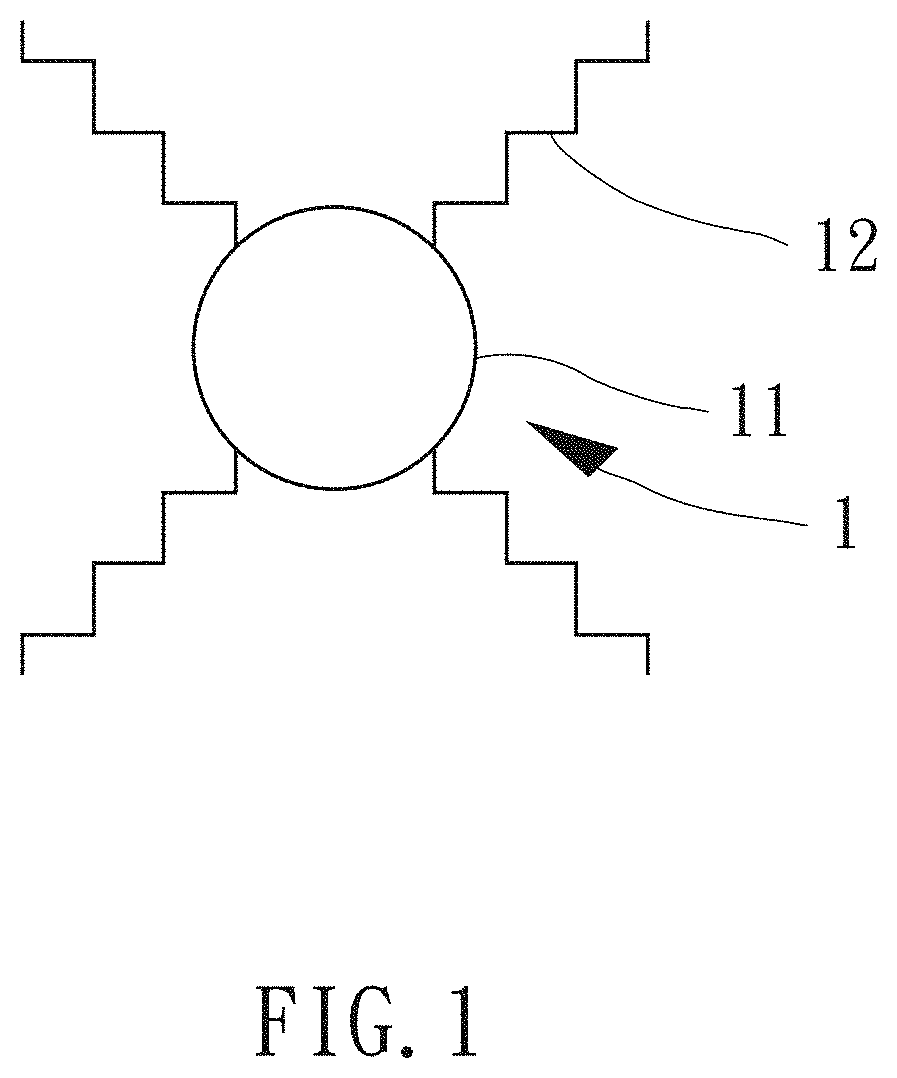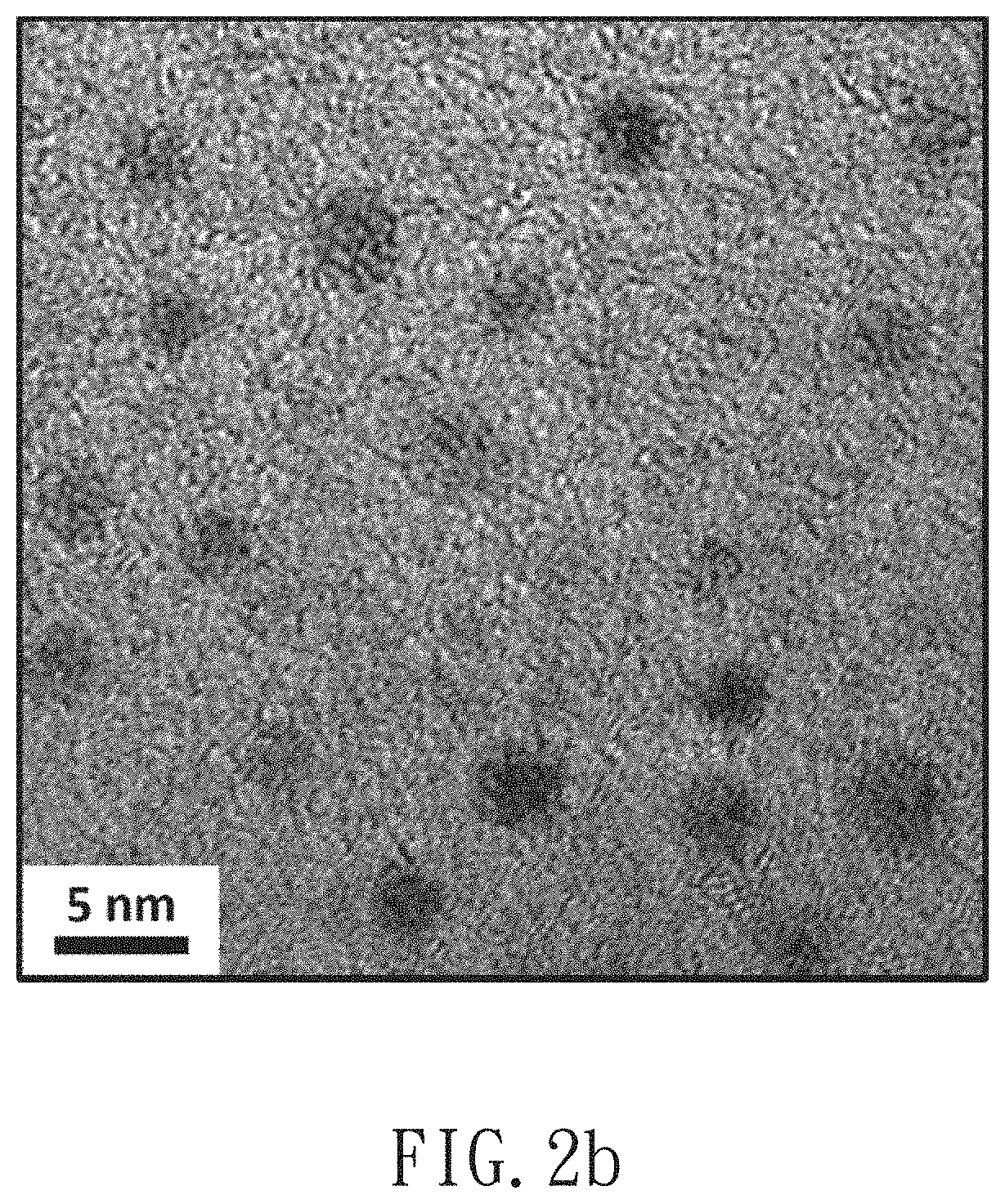Fluorescent probe
a fluorescent probe and probe body technology, applied in the field of probes, can solve problems such as easy loss of enzymatic activity of gox
- Summary
- Abstract
- Description
- Claims
- Application Information
AI Technical Summary
Benefits of technology
Problems solved by technology
Method used
Image
Examples
Embodiment Construction
[0019]Referring to FIG. 1, a fluorescent probe 1 according to an embodiment of the present invention can include: a silicon oxide (SiOx) core 11 and a self-assembled monolayer (SAM) 12.
[0020]Specifically, 3-glycidoxypropyl trimethoxysilane (GPS) is hydrolyzed and condensed to form the fluorescent probe 1. The self-assembled monolayer 12 can contain an epoxide group, and the self-assembled monolayer 12 joins the silicon oxide core 11 by a covalent bond. In this embodiment, 3-glycidoxypropyl trimethoxysilane (GPS) is hydrolyzed and condensed at 350° C. for 90 minutes under an ambient air atmosphere. After cooling to room temperature, the fluorescent probe 1 is obtained. The fluorescent probe 1 has a pH value about 7. Moreover, with reference to FIGS. 2a and 2b, the fluorescent probe 1 has a particle size of 3.1±0.3 nm.
[0021]In addition, the epoxide group of the fluorescent probe 1 can form a conjugated bond with a molecule with an amino group via an aminolysis reaction. Thus, the mole...
PUM
 Login to View More
Login to View More Abstract
Description
Claims
Application Information
 Login to View More
Login to View More - R&D
- Intellectual Property
- Life Sciences
- Materials
- Tech Scout
- Unparalleled Data Quality
- Higher Quality Content
- 60% Fewer Hallucinations
Browse by: Latest US Patents, China's latest patents, Technical Efficacy Thesaurus, Application Domain, Technology Topic, Popular Technical Reports.
© 2025 PatSnap. All rights reserved.Legal|Privacy policy|Modern Slavery Act Transparency Statement|Sitemap|About US| Contact US: help@patsnap.com



